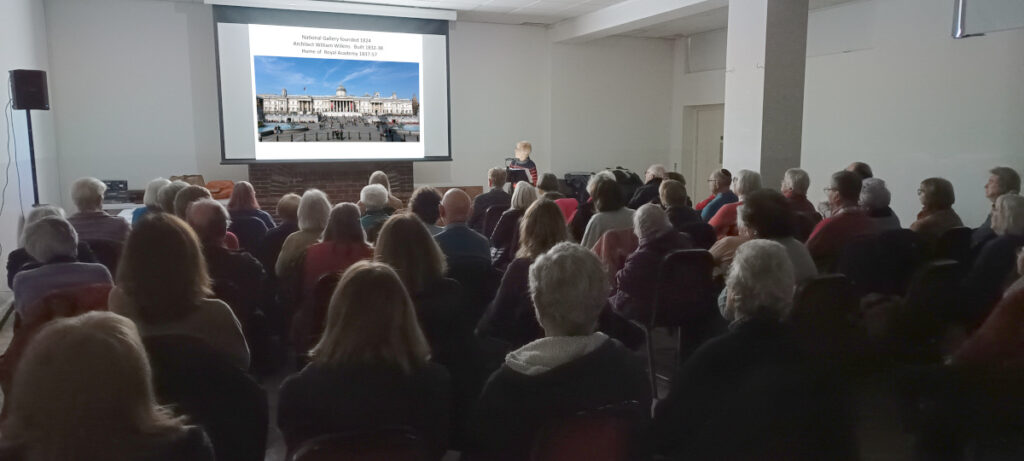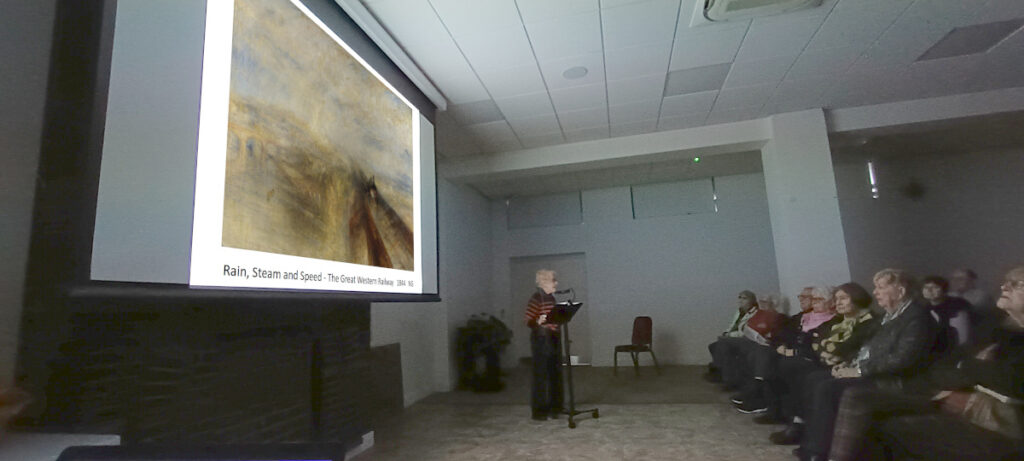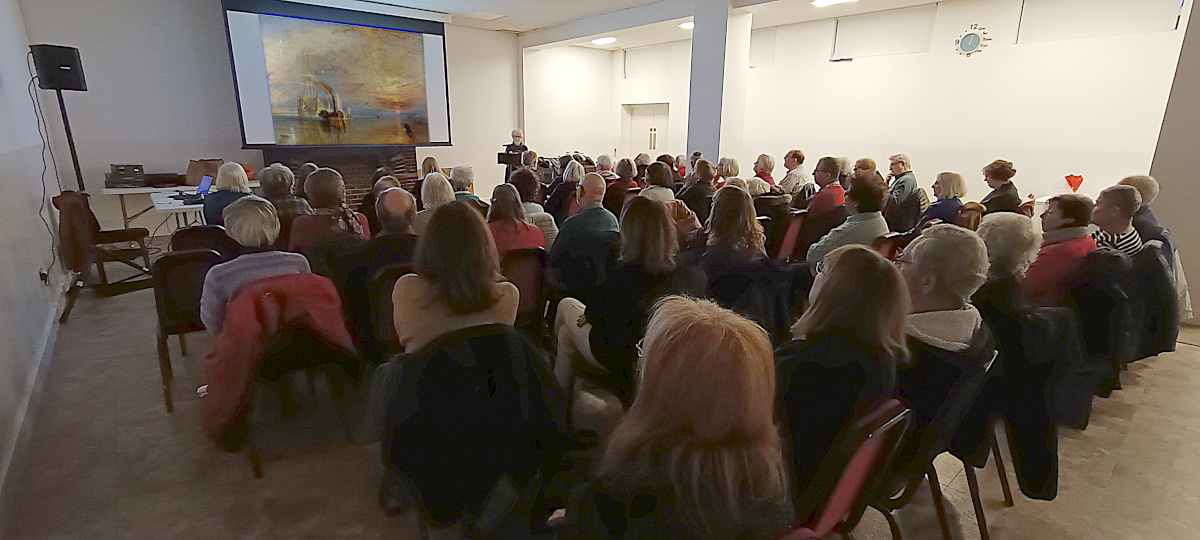Our programme of lectures on British Artists and the London Art Galleries this time explored the work of Joseph Mallord William Turner (1775-1851) and the establishment of the National Gallery (founded in 1824). Our lecturer, Jennifer, had a large number of illustrations that explained how both the artist and how the gallery launched and developed over the years.

The National Gallery was set up to house the British Collection of Art, which until 1823 had been the property of John Julius Angerstein. On his death, his very extensive collection was donated to the nation, and was located at 100 Pall Mall in London until the National Gallery was completed and ready for it.
In a reflection of Angerstein’s donation, Turner had left all his unsold works, on his death in 1851, to the nation in the Turner Bequest, and some 300 oil paintings and 30,000 watercolours and sketches bound in 300 sketchbooks needed to find a home. Originally these were housed in the National Gallery. With the expansion of the collection over the years, much was transferred in 1897 to the Tate Gallery (now called Tate Britain), and most of the Turner items were moved there in 1910.
Turner’s talent was prodigious, even from his childhood. He enrolled in the Royal Academy at age 14, became an Associate Member at age 24 and then became the youngest full member of the Royal Academy at age 26. He spent most of his life in London and Margate, but he did travel throughout Europe – especially Rome and Venice – where his ability to portray light, mist and water excelled.

Jennifer also spoke at length about the significance of the Fighting Temeraire (top) – the most popular painting in Britain – and Rain Steam and Speed (above), and their representation of change in the world at that time. Turner never married, and possibly inspired by the works of the Van der Veldes, produced many works of art depicting men at peril on the sea. There were also many landscapes and architecturally accurate works.
This excellent course continues on 9 February 2024 with an examination of the artists and works to be found in the National Portrait Gallery.

